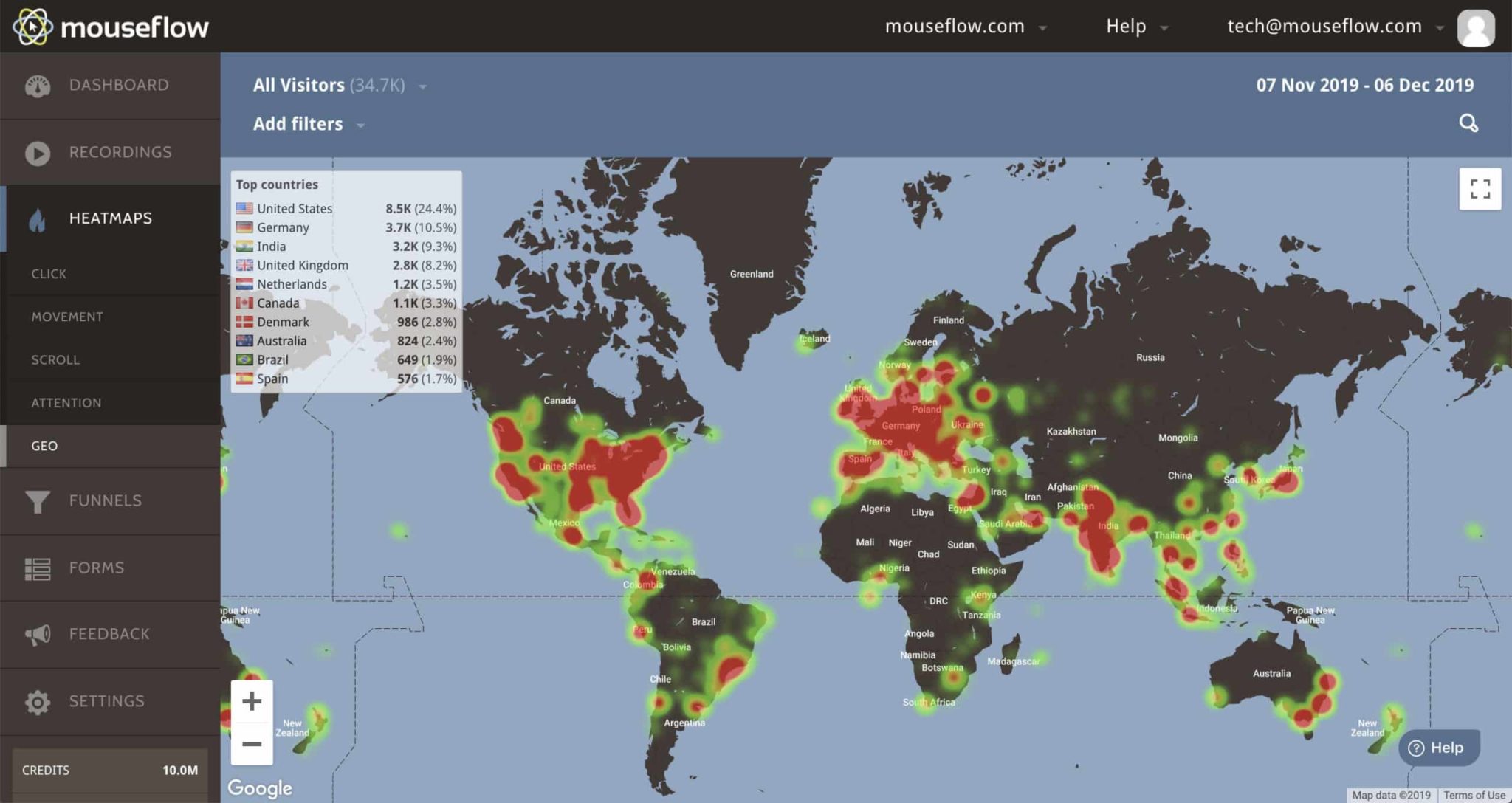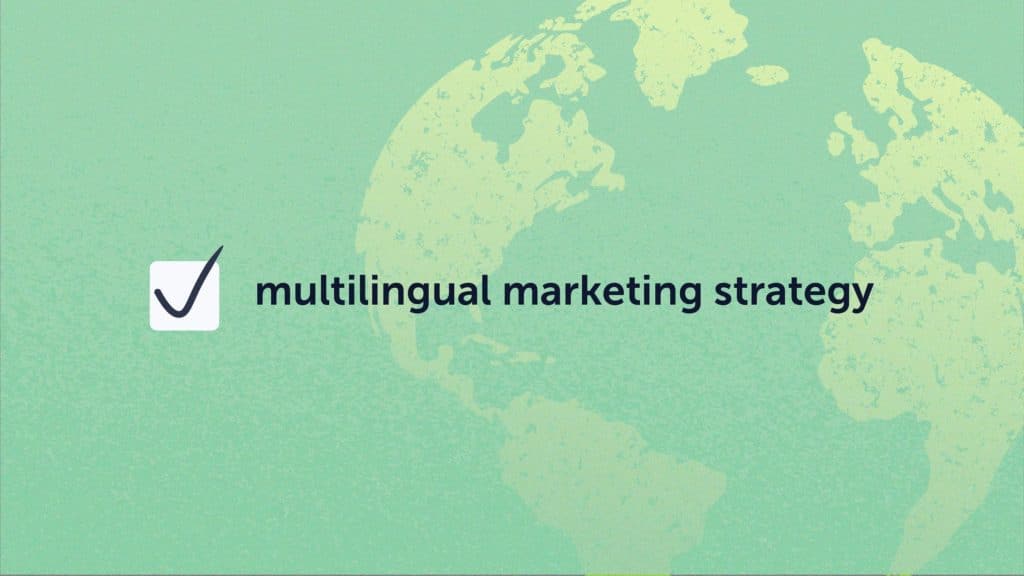
If you’re not promoting your ecommerce website to audiences that speak other languages, you’re missing out on tons of traffic and revenue. With a multilingual marketing strategy at hand, you can start to promote your website throughout the world.
According to Hubspot, 70% of marketers are actively investing in content marketing strategy and 33% of marketers use paid advertising to increase their brand awareness. Internet World Stats notes internet usage is increasing throughout the world, with China leading at 400 million users.
You don’t have to be a native speaker to put together and execute a multilingual marketing strategy — but you can’t rely on Google Translate to cover you, either.
Here are eight ways to add a multilingual marketing strategy to your overarching ecommerce marketing strategy.
Localized Websites Are Best
Before we begin, I want to say that a good multilingual marketing strategy comes with localizing your ecommerce websites for your intended audience. For example, if you have South African consumers, you might want to target website content that’s relevant to them, rather than those of Australia. It would make no sense for your South African consumers to have website content that’s relevant for Australia.
Doing so can seriously hinder the performance and effectiveness of your multilingual marketing strategy — and your ecommerce website itself. To effectively reach your target audience who speak different languages, you’ll need to research target audience demographics, look at industry trends and insights in your target region, and transcreate. Those learning how to promote a website to other languages will need an expert multilingual promotional strategy at your fingertips.
1. International SEO (Search Engine Optimization) for Multilingual Reach
Once you have a multilingual website, you’ll need to add SEO elements to reach the international market. This isn’t just any ordinary SEO, but international SEO. That means incorporating elements such as:
- specifying the target country and/or region with an international-friendly URL structure
- establishing which language your pages are targeting with the use of language tags
- and creating and maintaining content in your target audience’s language.
That’s how you’ll have a good chance of ranking internationally, or in your own country with a foreign-language audience in mind.

You’ll have to tailor your content to regional specificities (like date, time, and addresses), as well as for cultural markers in each region/language you’re targeting. Different regions will prefer different variations: from video content, website layout, and humor. For example, British English humor is different from Australian English humor, so you’ll have to adjust your content accordingly, in order to truly market your ecommerce website for your specific regions.
2. Multilingual Content Marketing Strategy with a Blog
A blog is a free platform you can use to promote your website with a multilingual content marketing strategy. There are many advantages to creating a blog for website promotion for your ecommerce business:
- building brand awareness
- engaging your customers
- building brand loyalty
- supporting your social media marketing efforts
- boosting your conversion rates.
It’ll also build you up to become an industry leader. 70-80% of internet users are blog readers according to statistics on blogging. So make sure to learn how to create a blog successfully and leverage it for your content marketing strategy.
3. Multilingual Social Media Marketing Strategy
Essential in marketing for ecommerce is the use of a great multilingual social media marketing strategy. Ecommerce websites, blogs, and social media should all be aligned for the same goals stated in #2.
You’ll have to connect with your multilingual audiences in your target markets where they hang out online, through multilingual social marketing. As stated previously, you can’t just rely on simple translation, such as using Google Translate. So, you must know your audience, their demographics, what posts they like, and so on — you can do this through analytics dashboards for cross border insights or with tools like SparkToro
You need more than just posts translated. You may need to adopt new social platforms, adhere to different cultural expectations, and tweak your brand to fit the market. The rise of TikTok began in foreign markets before crossing borders to gain steam in North America and English-speaking countries. Any brand who got on TikTok as part of their multilingual social media marketing strategy has a major leg up on those just joining the fray.
Video content is also necessary for a good social media presence as part of your multilingual digital marketing strategy. Hubspot says that a high percentage of users among Millennials and GenZ, can’t live without video and prefer short, long-form videos that catch their interests. You can use a tool like InVideo or any other online video editing tools for your social media content, or even your blog content or PPC ads, which we’ll talk about in #6.
4. Multilingual Email Marketing
For marketing your ecommerce website to a multilingual audience, you’ll also need to create a multilingual email marketing campaign.

According to BigCommerce: “Industry benchmarks show that nearly 21% of people will open your email, with 2.56% of them clicking through to your website. Additionally, 33% of recipients will open your email on subject line alone and 55% of emails are opened on a mobile device.”
It goes without saying that your email list will consist of VIPs — those that are already customers, or those that browse your site regularly. Make sure to keep your email list always updated, since people change email addresses all the time. But your email list can also include buyers from middle to the bottom of the funnel — such as abandoned cart buyers. Once you grow your email list, you can track your email campaigns easily.
A multilingual ecommerce marketing strategy via email list needs to have localized content as well: for example, if you have a promo for US customers, you won’t be sending the same email to your Latin American customers. The best ecommerce marketing through email marketing will consist of links in email content to other pages of the website, content localized in the target region’s preferred language, and actionable information within the email itself.
Don’t create a broken experience — every part of the email should be localized and the journey the user takes after they click should be, too. Don’t take them back to the English (or original language) site, but to multilingual content that speaks directly to them.
5. Promotions and Contests in Foreign Languages
The best ways to advertise your websites easily and effectively are through creating promotions and hosting contests. Why? Because they’re easy to implement and display great results. According to Outgrowco at Medium, contests have a conversion rate of almost 34% and according to Wishpond, contest CTA’s have a 3.73% higher conversion rate when compared to other CTA’s.
What’s key here is to implement promotions and contests that target specific language regions, as well as target content based on consumer research. The same offers may not resonate with audiences in other countries for a variety of reasons. For example, even the use of color psychology may affect the way you implement your contest, which may differ according to culture.
Research successful branded contests by leading brands native to that language to gain insight into what will strike a cord with your multilingual targets.
6. Multilingual PPC Advertising
What’s a good website promotion strategy to market your ecommerce website without a great PPC strategy? To promote your website, you’ll be running PPC ads on Google and alongside your social media and email marketing campaigns — you’ll be running dynamic targeting campaigns, running PPC ads on Facebook and Instagram, and populating your email content with ads.
For a multilingual PPC advertising strategy, you’ll need to use language specific ad text and landing pages, conduct competitive research in that region, and identify foreign-language keywords that you need to use for your PPC strategy. Utilizing native speakers for research and employing native speakers as well is key.
7. AR and VR for Multilingual Online Stores
Immersive technologies are commonplace nowadays, primarily Augmented Reality (AR) and Virtual Reality (VR). Think Facebook Messenger and Snapchat filters, a type of AR technology. These immersive technologies change the way we experience realities, such as gaming, theater, live chat. With these technologies leveraged for ecommerce, users can experience a vast shopping reality than they would when going to the shopfront.
According to a study, “78% of people who have experienced AR prefer virtual experiences over video content, 61% prefer to make purchases on sites that offer AR, and 77% prefer to use AR capabilities to preview product variations.” Those numbers are huge, and they’re what consumers are demanding. These wants are determining the drive for more AR in the ecommerce industry.
A mobile ecommerce app is the most common way to utilize AR for your brand. You can make a virtual catalog and integrate AR with it. Introduce a catalog with augmented reality 3D models, preferably 3D models of your products. Then choose how to best integrate these 3D models into features of real spaces.
8. Target (the Right) Multilingual Regions with Geo Heatmaps
Don’t just go multilingual because you can — do it because there’s market demand.

For a rather bulletproof way to get started, use a tool like geo heatmaps. These geo heatmaps will tell you where existing website users come from — so if you see an already present customer base from, say, Spain or Mexico, you may begin with Spanish in your multilingual marketing strategy.
Use geo heatmap insights to inform other strategies, too — PPC targeting, social media marketing, and more. Segment your site recordings to show how foreign language audiences use your site, and use those insights to inform UX and product updates, as well as content, messaging, and product placement.
Multilingual Marketing Means Transcreating
When marketing your ecommerce website to a multilingual audience, always remember: don’t translate, transcreate. Transcreating is the process of translating with cultural aspects in mind, rather than direct word-for-word translation. This method goes for all of the ways outlined above.
